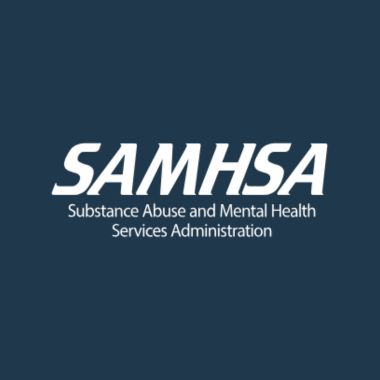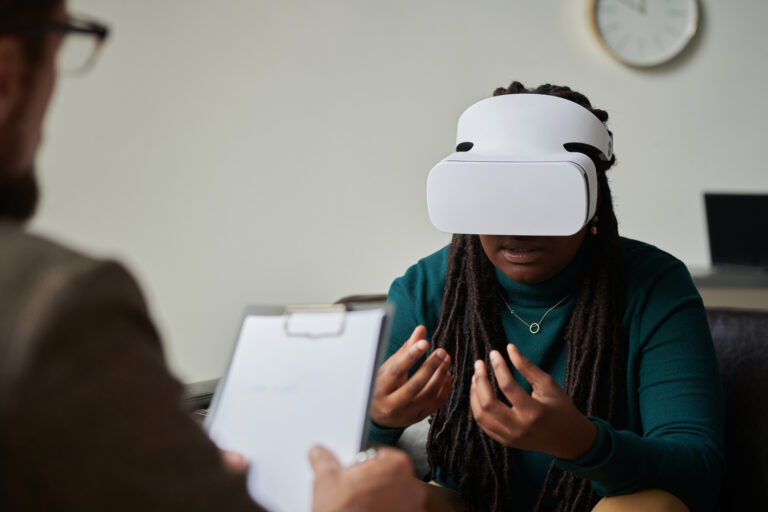This advisory introduces readers to digital therapeutics (DTx) and the benefits of their use in behavioral health. It describes the research, regulatory, and reimbursement implications for DTx as well as selection and implementation considerations.
Key Takeaways
- “DTx can be effective independent or complementary services in the management and treatment of mental health conditions and substance use disorders. “
- “Users should be aware that not all healthcare applications for mental health conditions and substance use disorders have an evidence base for therapeutic use.”
- “At least five federal agencies have initiatives to develop, research, review, regulate, distribute, and address payment for DTx.”
- “At this time, few health plans cover prescription digital therapeutics (PDTs), but payers continue to explore and expand this area.”
- “For DTx to increase behavioral health equity, they must be designed and implemented to account for differences in health and digital literacy and to be culturally and linguistically appropriate, adaptable to variable service settings, and affordable and accessible for all users. “
- Continued research is needed on the efficacy of DTx, balanced with ongoing consideration of costs, patient/client privacy, and protection of health data.
References
- International Organization for Standardization. (2023). Health Informatics — Personalized Digital Health — Digital Therapeutics Health Software Systems. ISO/TR 11147. https://www.iso.org/obp/ ui/#iso:std:iso:tr:11147:ed-1:v1:en
- Digital Therapuetics Alliance. (2019). Digital therapeutics definition and core principles. https:// dtxalliance.org/wp-content/uploads/2021/01/DTA_DTx-Definition-and-Core-Principles.pdf
- Food and Drug Administration. (2022). Policy for device software functions and mobile medical applications: Guidance for industry and Food and Drug Administration staff. https://www.fda.gov/ regulatory-information/search-fda-guidance-documents/policy-device-software-functions-and-mobilemedical-applications
- Roberts, E. T., & Mehrotra, A. (2020). Assessment of disparities in digital access among Medicare beneficiaries and implications for telemedicine. Journal of the American Medical Association Internal Medicine, 180(10), 1386-1389. https://doi.org/10.1001/jamainternmed.2020.2666
- Kaihlanen, A.-M., Virtanen, L., Buchert, U., Safarov, N., Valkonen, P., Hietapakka, L., Hörhammer, I., Kujala, S., Kouvonen, A., & Heponiemi, T. (2022). Towards digital health equity – a qualitative study of the challenges experienced by vulnerable groups in using digital health services in the COVID-19 era. BioMed Central Health Services Research, 22(1), 1-13. https://doi.org/10.1186/s12913-022-07584-4
- Philippe, T. J., Sikder, N., Jackson, A., Koblanski, M. E., Liow, E., Pilarinos, A., & Vasarhelyi, K. (2022). Digital health interventions for delivery of mental health care: Systematic and comprehensive meta-review. Journal of Medical Internet Research – Mental Health, 9(5), e35159. https://doi.org/10.2196/35159
- Lecomte, T., Potvin, S., Corbière, M., Guay, S., Samson, C., Cloutier, B., Francoeur, A., Pennou, A., & Khazaal, Y. (2020). Mobile apps for mental health issues: Meta-review of meta-analyses. Journal of Medical Internet Research – mHealth and uHealth, 8(5), e17458. https://doi.org/10.2196/17458
- World Health Organization. (2018). Classification of digital health interventions v1.0: A shared language to describe the uses of digital technology for health. https://www.who.int/publications/i/item/WHORHR-18.06
- Digital Therapeutics Alliance. (2022). DTx value assessment & integration guide version 2.0. https:// dtxalliance.org/advancing-dtx/dtx-value-guide/
- Richardson, S., Lawrence, K., Schoenthaler, A. M., & Mann, D. (2022). A framework for digital health equity. npj Digital Medicine, 5(1), 1-6. https://doi.org/10.1038/s41746-022-00663-0
- Bucci, S., Berry, N., Morris, R., Berry, K., Haddock, G., Lewis, S., & Edge, D. (2019). “They are not hardto-reach clients. We have just got hard-to-reach services.” Staff views of digital health tools in specialist mental health services. Frontiers in Psychiatry, 10, 344. https://doi.org/10.3389/fpsyt.2019.00344
- Jacobson, N. C., Quist, R. E., Lee, C. M., & Marsch, L. A. (2023). Using digital therapeutics to target gaps and failures in traditional mental health and addiction treatments. In Digital therapeutics for mental health and addiction (pp. 5-18). Elsevier. https://doi.org/10.1016/B978-0-323-90045-4.00005-8
- Asimopoulos, M. (2022). Payer considerations for evaluation, coverage, and reimbursement of digital therapeutics. https://www.hmpgloballearningnetwork.com/site/frmc/conference-coverage/payerconsiderations-evaluation-coverage-and-reimbursement-digital
- Bickel, W.K., Marsch, L.A., Buchhalter, A.R., & Badger, G.J. (2008). Computerized behavior therapy for opioid-dependent outpatients: A randomized controlled trial. Experimental and Clinical Psychopharmacology, 16(2), 132-143. https://doi.org/10.1037/1064-1297.16.2.132
- Marsch, L.A., Guarino, H., Acosta, M., Aponte-Melendez, Y., Cleland, C., Grabinski, M., Brady, R., & Edwards. J. (2014). Web-based behavioral treatment for substance use disorders as a partial replacement of standard methadone maintenance treatment. Journal of Substance Abuse Treatment, 46(1), 43-51. https://doi.org/10.1016/j.jsat.2013.08.012
- Maricich, Y. A., Bickel, W. K., Marsch, L. A., Gatchalian, K., Botbyl, J., & Luderer, H. F. (2021). Safety and efficacy of a prescription digital therapeutic as an adjunct to buprenorphine for treatment of opioid use disorder. Current Medical Research and Opinion, 37(2), 167-173. https://doi.org/10.1080/03007995 .2020.1846022
- Xiong, X., Braun, S., Stitzer, M., Luderer, H., Shafai, G., Hare, B., Stevenson, M., & Maricich, Y. (2023). Evaluation of real‐world outcomes associated with use of a prescription digital therapeutic to treat substance use disorders. The American Journal on Addictions, 32(1), 24-31. https://doi.org/10.1111/ ajad.13346
- Struble, C.A. (2023, June 19). Comparing the impact of minority stressors and co-occurring mental health factors on cannabis-related problems in a diverse sample of LGBTN+ young adults. In Struble, C.A. (chair). Beyond the dichotomy: Understanding disparities in cannabis use behaviors across LGBTN+ subgroups of adolescents and young adults. [Mini-Symposium]. College on Problems of Drug Dependence Annual Scientific Meeting. Denver, CO, USA.
- Campbell, A.N., Turrigiano, E., Moore, M., Miele, G.M., Rieckmann, T, Hu, M.C., Kropp, F., RingorCarty, R., & Nunes, E.V. (2015). Acceptability of a web-based community reinforcement approach for substance use disorders with treatment-seeking American Indians/Alaska Natives. Community Mental Health Journal, 15(4), 393-403. https://doi.org/10.1007/s10597-014-9764-1
- Campbell, A.N.C., Rieckmann, T., Pavlicova, M., Choo, T., Molina, K., McDonnell, M., West, A.E., Daw, R., Marsch, L.A., & Venner, K. (In press). Culturally tailored digital therapeutic for substance use disorders with urban Indigenous People in the United States: A randomized controlled study. Journal of Substance Abuse Treatment.
- Marsch, L.A., Chen, C.H., Adams, S.R., Asyyed, A., Does, M.B., Hassanpour, S., Hichborn, E., JacksonMorris, M., Jacobson, N.C., Jones, H.K., Kotz, D., Lambert-Harris, C.A., Li, Z., McLeman, B.M., Mishra, A., Stanger, C., Subramaniam, G.M., Wu, W., & Campbell, C.I. (2022). The feasibility and utility of harnessing digital health to understand clinical trajectories in medication treatment for opioid use disorder: D-TECT study design and methodological considerations. Frontiers in Psychiatry, 29(13), 871-916. https://www.frontiersin.org/articles/10.3389/fpsyt.2022.871916/full
- Campbell, C.I., Chen, C.H., Adams, S.R., Asyyed, A., Athale, N.R., Does, M.B., Hassanpour, S., Hichborn, E., Jackson-Morris, M., Jacobson, N.C., Jones, H.K., Kotz, D., Lambert-Harris, C.A., Li, Z., McLeman, B., Mishra, V., Stanger, C., Subramaniam, G., Wu, W., Zegers, C., & Marsch, LA (2023). Patient engagement in a multimodal digital phenotyping study of Opioid Use Disorder. Journal of Medical Internet Research, 25; e45556. https://doi.org/10.2196/45556
- National Institute of Mental Health. (2021). Technology and the future of mental health treatment. https://www.nimh.nih.gov/health/topics/technology-and-the-future-of-mental-health-treatment
- Rackoff, G. N., Fitzsimmons-Craft, E. E., Taylor, C. B., Eisenberg, D., Wilfley, D. E., & Newman, M. G. (2022). A Randomized Controlled Trial of Internet-Based Self-Help for Stress During the COVID-19 Pandemic. The Journal of adolescent health : official publication of the Society for Adolescent Medicine, 71(2), 157–163. https://doi.org/10.1016/j.jadohealth.2022.01.227
- Agency for Healthcare Research and Quality. Digital Healthcare Research Program. https://digital.ahrq. gov/
- Department of Veterans Affairs National Center for PTSD. VA Mobile Apps. https://www.ptsd.va.gov/ appvid/mobile/index.asp
- Owen, J. E., Kuhn, E., Jaworski, B. K., McGee-Vincent, P., Juhasz, K., Hoffman, J. E., & Rosen, C. (2018). VA mobile apps for ptsd and related problems: Public health resources for veterans and those who care for them. Mhealth, 4. https://pubmed.ncbi.nlm.nih.gov/30148141/
- Lagan, S., Aquino, P., Emerson, M. R., Fortuna, K., Walker, R., & Torous, J. (2020). Actionable health app evaluation: Translating expert frameworks into objective metrics. npj Digital Medicine, 3(1), 1-8. https://doi.org/10.1038/s41746-020-00312-4
- Torous, J., & Roberts, L. W. (2017). Needed innovation in digital health and smartphone applications for mental health: Transparency and trust. JAMA Psychiatry, 74(5), 437-438. https://doi.org/10.1001/ jamapsychiatry.2017.0262
- Food and Drug Administration. (2017). Learn if a medical device has been cleared by the FDA for marketing. https://www.fda.gov/medical-devices/consumers-medical-devices/learn-if-medical-devicehas-been-cleared-fda-marketing#:~:text=Class%20III%20%E2%80%93%20These%20devices%20 usually,devices%20fall%20under%20this%20category
- CNET. (2020). FDA approved vs. FDA cleared: Why you need to know the difference. https://www.cnet. com/health/fda-approved-vs-fda-cleared-whats-the-difference/
- Food and Drug Administration. (2017). Learn if a medical device has been cleared by the FDA for marketing. https://www.fda.gov/medical-devices/consumers-medical-devices/learn-if-medical-devicehas-been-cleared-fda-marketing#:~:text=Class%20III%20%E2%80%93%20These%20devices%20 usually,devices%20fall%20under%20this%20category
- Food and Drug Administration. (2022). Premarket notifcation of 510(k). https://www.fda.gov/medicaldevices/premarket-submissions-selecting-and-preparing-correct-submission/premarket-notification510k#intro
- Food and Drug Administration. (2022). Digital health policy navigator. https://www.fda.gov/medicaldevices/digital-health-center-excellence/digital-health-policy-navigator
- Dang, A., Arora, D., & P, R. (2020). Role of digital therapeutics and the changing future of healthcare. Journal of Family Medicine Primary Care, 9(5):2207-2213. https://doi.org/10.4103/jfmpc.jfmpc_105_20
- Whaibeh, E., Mahmoud, H., & Naal, H. (2020). Telemental health in the context of a pandemic: The COVID-19 experience. Current Treatment Options in Psychiatry, 7(2), 198-202. https://doi.org/10.1007/ s40501-020-00210-2
- Sverdlov, O., Van Dam, J., Hannesdottir, K., & Thornton‐Wells, T. (2018). Digital therapeutics: An integral component of digital innovation in drug development. Clinical Pharmacology & Therapeutics, 104(1), 72-80. https://doi.org/10.1002/cpt.1036
- Torous, J., Bucci, S., Bell, I. H., Kessing, L. V., Faurholt-Jepsen, M., Whelan, P., Carvalho, A. F., Keshavan, M., Linardon, J., & Firth, J. (2021). The growing field of digital psychiatry: Current evidence and the future of apps, social media, chatbots, and virtual reality. World Psychiatry: Official Journal of the World Psychiatric Association, 20(3), 318-335. https://doi.org/10.1002/wps.20883
- Ritterband, L. M., Thorndike, F. P., Morin, C. M., Gerwien, R., Enman, N. M., Xiong, R., Luderer, H. F., Edington, S., Braun, S., & Maricich, Y. A. (2022). Real-world evidence from users of a behavioral digital therapeutic for chronic insomnia. Behaviour Research and Therapy, 153, 104084. https://doi. org/10.1016/j.brat.2022.104084
- Centers for Medicare and Medicaid Services. (2021). Centers for Medicare & Medicaid Services (CMS) Healthcare Common Procedure Coding System (HCPCS) application summaries and coding recommendations: Second biannual, 2021 HCPCS coding cycle. https://www.cms.gov/files/ document/2021-hcpcs-application-summary-biannual-2-2021-non-drug-and-non-biological-items-andservices.pdf
- Social Security Administration. Compilation of the social security laws: Exclusions from coverage and Medicare and secondary payer. https://www.ssa.gov/OP_Home/ssact/title18/1862.htm
- American Medical Association. (2022). RVS Update Committee (RUC). https://www.ama-assn.org/ about/rvs-update-committee-ruc
- Centers for Medicare and Medicaid Services. (2022). Medicare and Medicaid programs; CY 2023 payment policies under the physician fee schedule and other changes to Part B payment and coverage policies; Medicare shared savings program requirements; implementing requirements for manufacturers of certain single-dose container or single-use package drugs to provide refunds with respect to discarded amounts; and COVID-19 interim final rules. https://www.federalregister.gov/ documents/2022/11/18/2022-23873/medicare-and-medicaid-programs-cy-2023-payment-policiesunder-the-physician-fee-schedule-and-other
- Pear Therapeutics. (2022) Pear therapeutics announces inclusion of reset® and reset-o® on the November 2021 MassHealth drug list summary update and MassHealth non-drug product list. Retrieved from https://peartherapeutics.com/pear-therapeutics-announces-inclusion-of-reset-and-reset-o-on-thenovember-2021-masshealth-drug-list-summary-update-and-masshealth-non-drug-product-list/
- Agency for Health Care Administration. (2023, January). Florida Medicaid Preferred Drug List. https://ahca.myflorida.com/content/download/8681/file/PDL.pdf
- Landi, H. (2022). Highmark steps up coverage of prescription digital therapies as companies see momentum in the payer market. https://www.fiercehealthcare.com/health-tech/highmark-expandscoverage-prescription-digital-therapeutics-app-makers-see-momentum
- Pharmacy Healthcare Solutions LLC. (2022). Current state of digital therapeutics and the reimbursement environment. https://phsirx.com/blog/current-state-of-digital-therapeutics-and-thereimbursement-environment#:~:text=Reimbursement%20for%20digital%20therapeutics%20is%20 uncharted%20territory%20for,is%20based%20on%20patient%20outcomes%20is%20being%20 investigated
- Agarwal, S., Jalan, M., Wilcox, H. C., Sharma, R., Hill, R., Pantalone, E., Thrul, J., Rainey, J. C., & Robinson, K. A. (2022). Evaluation of mental health mobile applications. Technical brief 41. (prepared by the Johns Hopkins University evidence-based practice center under contract no. 75q80120d00003.). AHRQ Publication, No. 22-EHC016. https://doi.org/10.23970/AHRQEPCTB41
- Carpenter-Song, E., Acquilano, S. C., Noel, V., Al-Abdulmunem, M., Torous, J., & Drake, R. E. (2022). Individualized intervention to support mental health recovery through implementation of digital tools into clinical care: Feasibility study. Community Mental Health Journal, 58(1), 99-110. https://doi.org/10.1007/ s10597-021-00798-6
- Wisniewski, H., & Torous, J. (2020). Digital navigators to implement smartphone and digital tools in care. Acta Psychiatrica Scandinavica, 141(4), 350-355. https://doi.org/10.1111/acps.13149
- Hirschtritt, M. E., & Insel, T. R. (2018). Digital technologies in psychiatry: Present and future. Focus (American Psychiatric Publishing), 16(3), 251-258. https://doi.org/10.1176/appi.focus.20180001
- Lawrence, K. (2022). Digital health equity. Exon Publications, Chapter 9, 121-130. https://doi. org/10.36255/exon-publications-digital-health-health-equity





